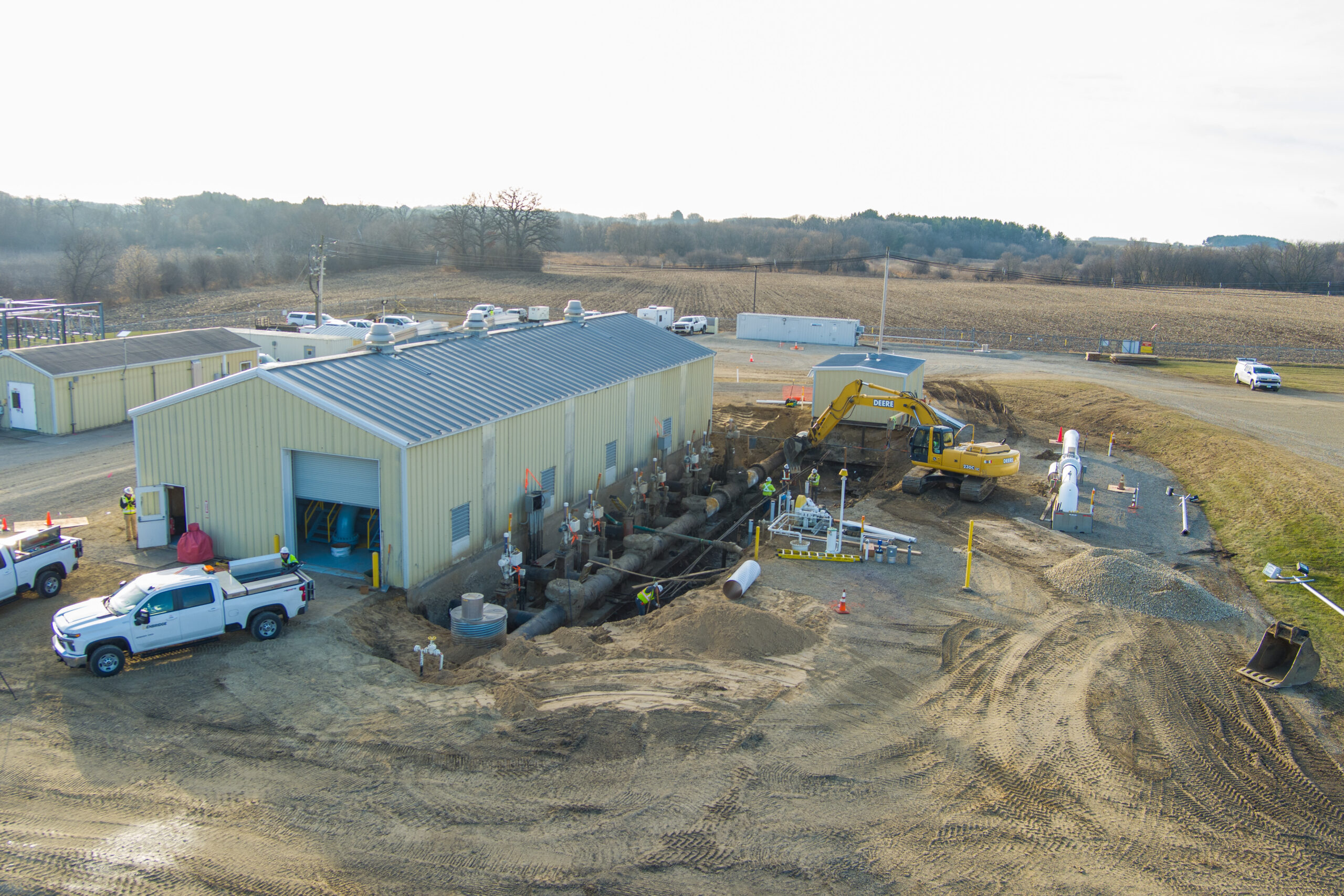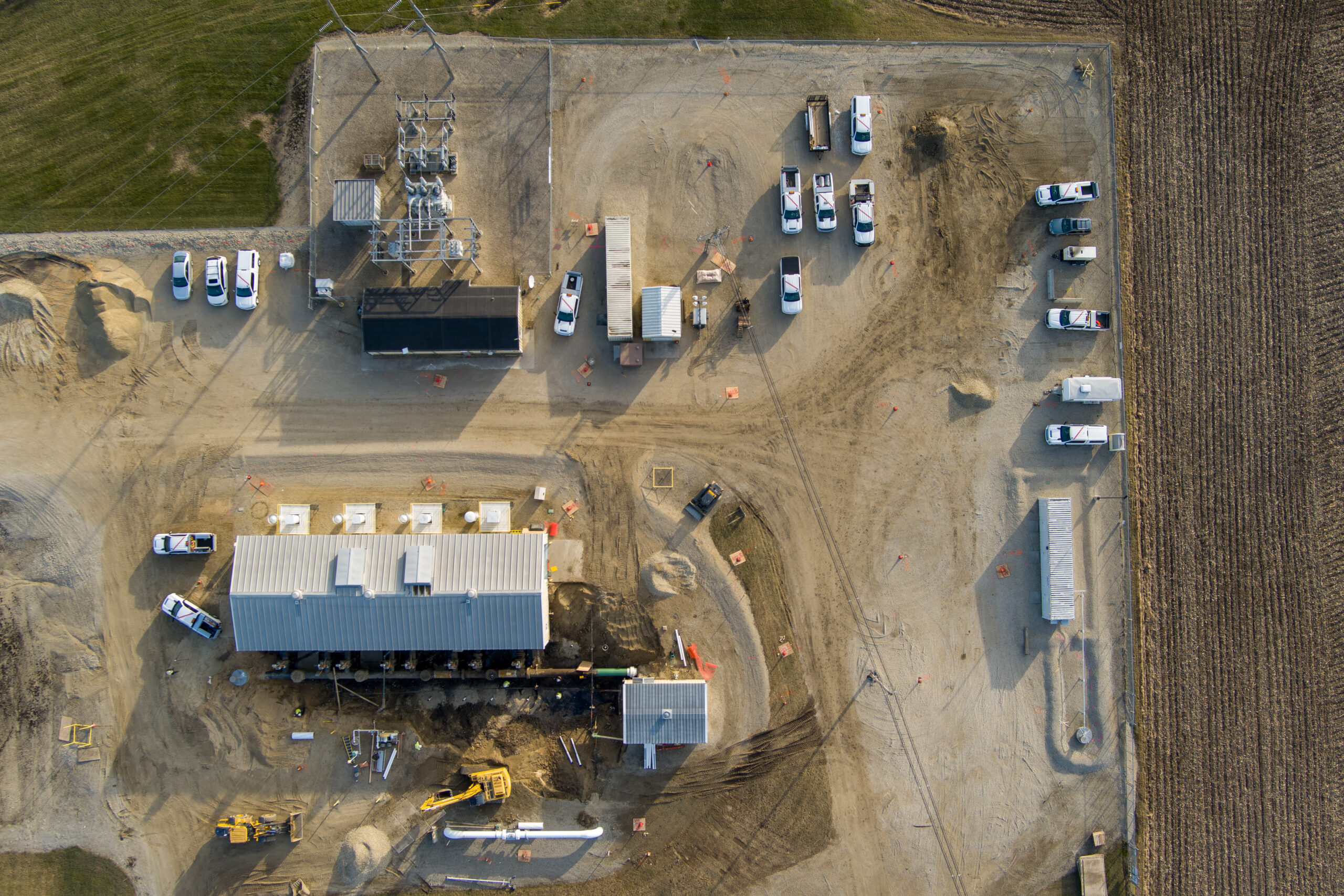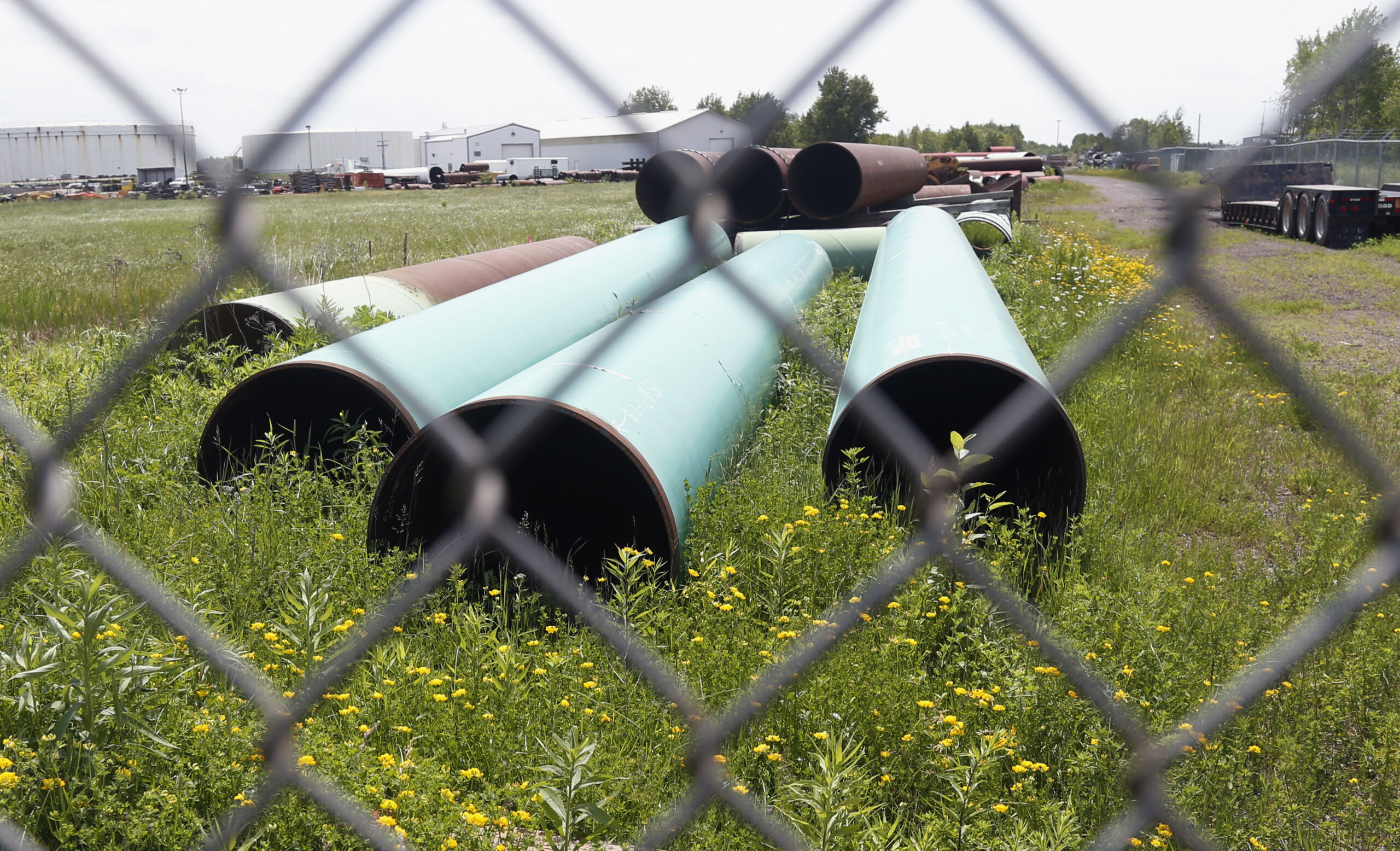Enbridge said its investigation of valves at sites along the company’s Line 6 pipeline revealed no active leaks after a valve failure caused an oil spill in Jefferson County last year.
In November, a valve failure caused 69,000 gallons of oil to leak from the company’s Cambridge pump station on Line 6 in the town of Oakland between Madison and Milwaukee. The pipeline runs 465 miles from Superior to Griffith, Indiana. The leak was caused by a degraded gasket that loosened over time.
The failed valve was installed in 1973, which the company cited as a contributing factor in the spill.
Paul Eberth, Enbridge’s director of Midwest operations, said the company excavated 11 sites between Superior and Chicago, including Cambridge, to examine flange, gasket and valve connections that were installed around the same time.
“We also checked the torque or the tightness of the bolts on those flanges. We haven’t found another issue,” Eberth said.
The company installed wells at other sites to monitor groundwater, and Enbridge is evaluating replacement of some gaskets on other flange connections. Eberth said the company is continuing to monitor the sites.
“We have groundwater monitoring that we do actively at many of our pump station sites. We have secondary containment. We have routine checks by our technicians. All of that’s continuing,” Eberth said.
While Enbridge said there are no active leaks, records show oil was found leaking from a gasket on a valve in the past on the Lakehead System’s Line 6A, which is now known as Line 6. The leak spilled around 1,150 barrels or roughly 48,000 gallons near a pump station at Enbridge’s Superior terminal in July 2000.
The company has also observed smaller spills of five to 10 gallons due to a broken fitting on a valve body in 2007 and a faulty valve flange in 2013 on Line 6 in Superior.
Meanwhile, cleanup and groundwater monitoring are still ongoing at the site of the spill in the town of Oakland.

Stay informed on the latest news
Sign up for WPR’s email newsletter.
Enbridge, DNR meet with community members on spill
Earlier this week, Enbridge and the Wisconsin Department of Natural Resources updated community members about ongoing work with local officials.
Groundwater monitoring has revealed no evidence of volatile organic compounds found in crude oil within wells or nearby waterways, according to Trevor Nobile, the DNR’s field operations director in the remediation and redevelopment program.
The company is installing and sampling around 15 monitoring wells at the site, and sampling has been expanded to include 11 wells at homes and businesses within a half-mile radius as recommended by the Jefferson County Health Department.
“It was done out of an abundance of caution, and it was something that was requested by the public,” Nobile said.
The DNR approved Enbridge’s plans to sample soil, groundwater, residential wells and surface water on March 21. That work will include continued sampling of an unnamed creek that drains to Lake Ripley, as well as 20 soil borings and collection of soil samples along the pipeline. As part of that, samples will be collected quarterly beginning this month.
Enbridge’s Eberth said sampling to date shows the spill has been contained to the site.
“While there are impacts to shallow groundwater, it’s not impacting water wells via either our own that’s on the property or the neighboring water wells,” Eberth said.

Enbridge to dig up more soil and use other cleanup methods to recover oil
Enbridge will also excavate more soil beginning in April, which will account for most of remaining crude oil that can be recovered. The company has so far cleaned up roughly 40,000 gallons of oil, according to a report to federal regulators.
The company has also developed a plan to recover crude oil through nine risers or recovery wells where pipes have been installed that run about 12-14 feet below the surface. Enbridge plans to send a probe through those pipes to monitor for crude oil, which would then be pumped and transferred to 55-gallon steel drums.
Field workers with Enbridge’s environmental engineering firm GEI Consultants will track the total volume of water and oil removed. Crude oil that’s recovered would be returned to the pipeline system at the site, and remaining water would be disposed of at a licensed facility. The work is expected to occur on a weekly basis until complete.
Nobile said the company will also use soil vapor extraction or soil venting, a cleanup method that essentially vacuums volatile organic compounds from the soil. Since the compounds evaporate, they’re extracted from the air through wells and treated above ground.
“Not only the product recovery wells or those riser wells, but soil vapor extraction has proved to be very effective on other sites,” Nobile said.
The DNR has asked for more details on how Enbridge determined the volume of oil that spilled. The spill first occurred on Nov. 11 and was initially found to be about 2 gallons. The full extent of the release wasn’t revealed until a month later, raising concerns about transparency. The company’s report to the federal Pipeline Hazardous Materials and Safety Administration said the leak likely occurred over an extended period of time.
Enbridge has spent around $1.3 million on emergency response, repairs and cleanup costs.
Wisconsin Public Radio, © Copyright 2025, Board of Regents of the University of Wisconsin System and Wisconsin Educational Communications Board.

